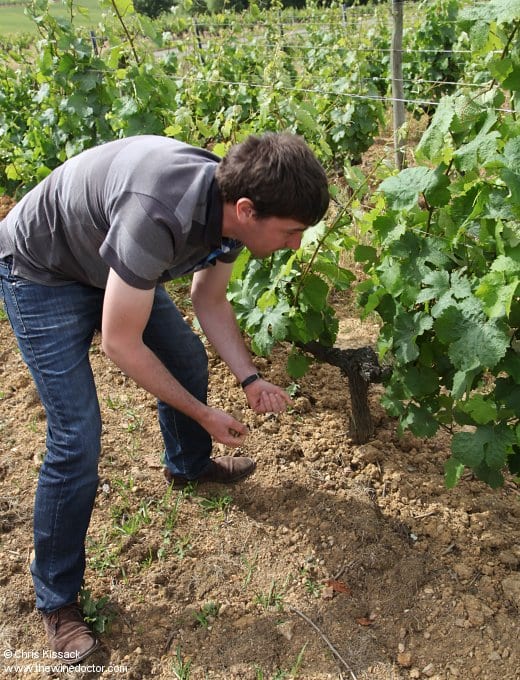Loire Wine Guide: Anjou
Emmanuel Ogereau brought his blue-grey combi-van to a halt in the courtyard of the Ogereau family’s domaine in St-Lambert-du-Lattay and we both clambered out. Glancing back at our transport at the end of a long morning touring the vineyards along the banks of the Layon, it was appropriately grimy, as were our boots and our hands. After visiting four different vineyards, during which Emmanuel had taken his trusty voiture off-road on more than one occasion, this was hardly a surprise.
We had started off high on the slopes above the course of the Layon, where Emmanuel and I had inspected a newly planted parcel of Chenin Blanc, their roots exploring their new home, reaching down to the spilite rock buried deep below. This was Emmanuel’s Vent de Spilite parcel, and I soon realised (even if the land fell away too steeply for me to see it) that it was situated directly above the very steep Coteau des Treilles, which I had visited with Jo and Wendy of Pithon-Paillé just a few years earlier. It was 2015, and at the time I had no inkling that Jo Pithon would eventually find himself with no willing heir, and that just four years later I would be returning to the Coteau des Treilles with its new owner, Ivan Massonnat of Domaine Belargus.
We continued on our tour of Emmanuel’s vines, crossing the Layon, which meanders its way through an ancient landscape, its banks blessed with favourable terroirs of ancient schist, its slopes covered in a blanket of vines. We stopped off on one of the region’s most renowned lieux-dits, Bonnes Blanches. Here the Chenin Blanc vines were slightly older, and they were now well-rooted, firmly anchored to the ochre-brown soils (pictured below, with Emmanuel Ogereau) and ancient Brioverian schist below, rocks which have lain here for more than 500 million years. This is a vineyard famous for its sweet wines, which have the Coteaux du Layon appellation, but many vignerons in the region use these vineyards to make a mix of dry and sweet wines. Emmanuel is no exception to this rule, and the philosophy at the aforementioned Pithon-Paillé had been exactly the same. As we talked a memory flashed into my mind; I was sitting at the top of Bonnes Blanches with Jo and Wendy Paillé; between us we had devoured an entire pâté aux prunes, an Angevine speciality made with unpitted plums, and we had chased it down with an appropriately sweet Coteaux du Layon. That had been a good day.

Please log in to continue reading:
